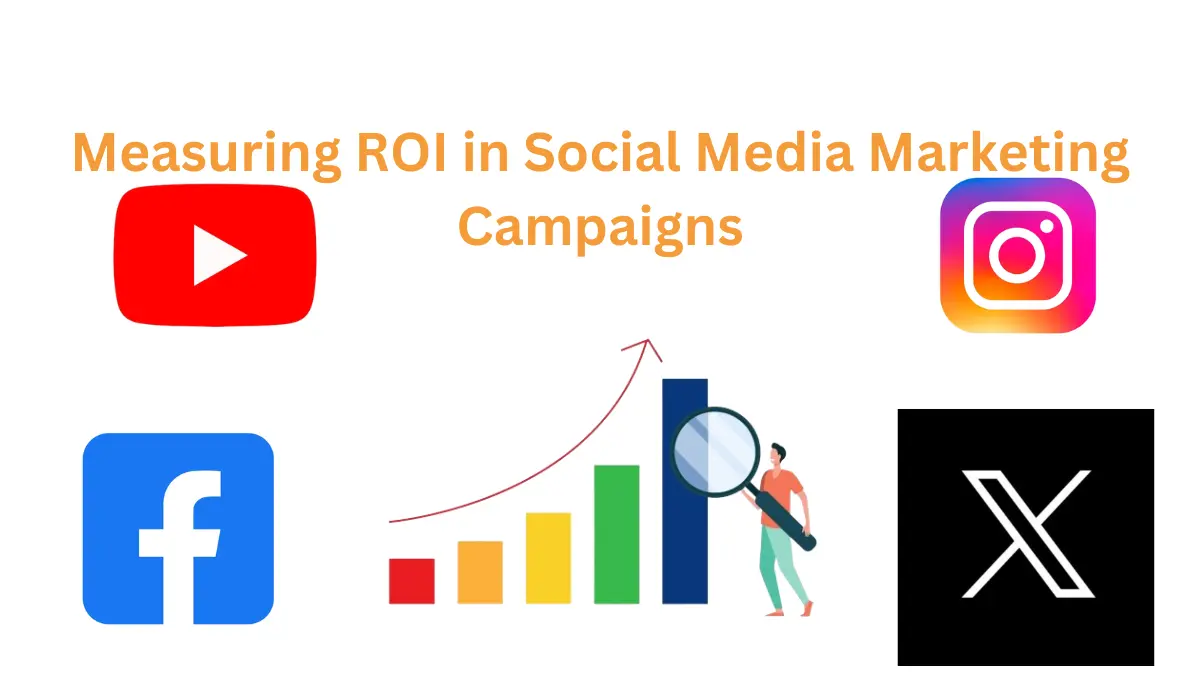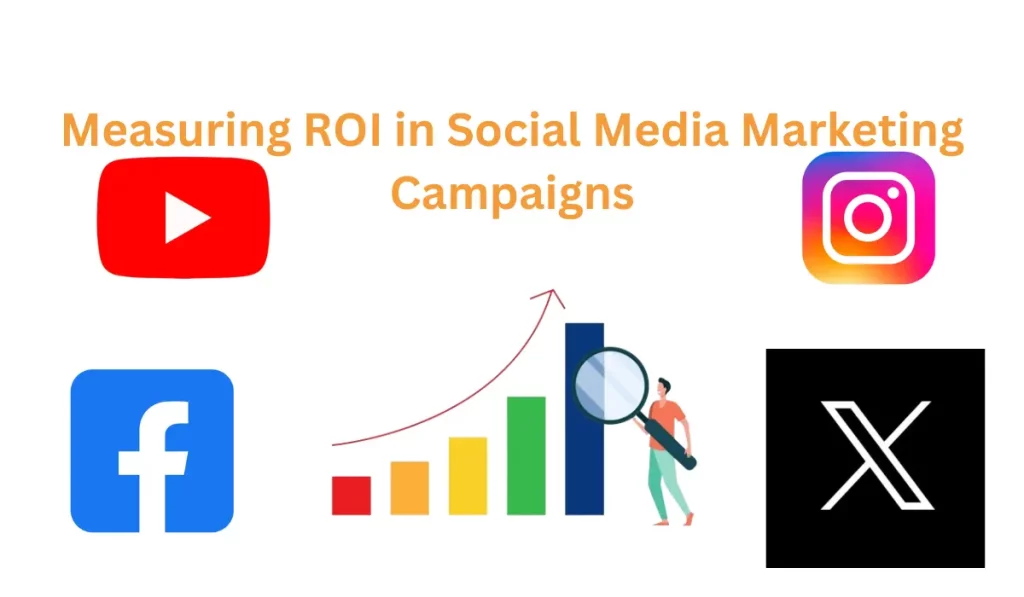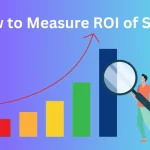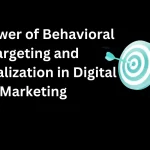In today’s digital age, social media platforms have become indispensable tools for businesses to connect with their audience, build brand awareness, and drive sales. However, amidst the flurry of tweets, posts, and likes, determining the return on investment (ROI) of social media marketing campaigns remains a challenge for many marketers. While engagement metrics like likes, shares, and comments are easily trackable, translating these interactions into tangible business outcomes can be elusive. Nonetheless, with the right strategies and tools, measuring ROI in social media marketing campaigns is not only possible but essential for optimizing marketing efforts and demonstrating value to stakeholders.
Measuring ROI in Social Media Marketing Campaigns
Before launching a social media marketing campaign, it’s crucial to establish clear and measurable objectives. Whether the goal is to increase website traffic, generate leads, boost sales, or enhance brand visibility, defining specific, achievable targets is the first step towards gauging ROI effectively. Each objective should be tied to key performance indicators (KPIs) that align with business goals, such as conversion rates, click-through rates, or customer acquisition costs.
Track Conversions:
Tracking conversions is an essential aspect of measuring the success and effectiveness of various marketing campaigns or business initiatives. Conversions refer to specific actions that you want your audience to take, such as making a purchase, signing up for a newsletter, filling out a form, or any other desired action.
Here’s a general overview of how you can track conversions:
Set Goals:
Define what actions on your website or platform constitute a conversion. These could be completing a purchase, signing up for a service, downloading a whitepaper, etc.
Use Analytics Tools:
Implement analytics tools like Google Analytics, Adobe Analytics, or similar platforms. These tools provide valuable insights into user behavior, traffic sources, and conversion rates.
Conversion Tracking Codes:
Depending on the platform you’re using and the type of conversion you’re tracking, you may need to implement specific tracking codes. For example, if you’re tracking conversions from online ads, you’ll need to implement conversion tracking codes provided by the advertising platform (e.g., Google Ads conversion tracking code).
Event Tracking:
For more complex interactions, such as button clicks, video views, or form submissions, you may need to set up event tracking. This involves adding additional code to track specific user interactions.
UTM Parameters:
If you’re running campaigns across different channels (e.g., email, social media, paid ads), use UTM parameters to track the source of traffic and identify which channels are driving conversions.
E-commerce Tracking:
If you’re running an e-commerce website, set up e-commerce tracking to monitor sales, revenue, and other transaction-related metrics.
Regular Analysis:
Regularly analyze your conversion data to identify trends, patterns, and areas for improvement. This analysis can help you optimize your campaigns and improve conversion rates over time.
Calculate Cost per Acquisition (CPA):
To calculate the Cost per Acquisition (CPA), you need to know two main pieces of information: the total cost incurred from your marketing efforts and the total number of acquisitions (conversions) generated from those efforts. Once you have these figures, you can use the following formula:
CPA = Total Cost / Total Number of Acquisitions
For example, let’s say you spent $1,000 on a marketing campaign and it resulted in 50 conversions (acquisitions). To calculate the CPA:
CPA = $1,000 / 50 = $20 per acquisition
So, in this scenario, the Cost per Acquisition (CPA) is $20.
It’s important to note that when calculating CPA, you should include all costs associated with acquiring customers, including advertising spend, campaign management fees, creative costs, etc. By monitoring your CPA, you can assess the efficiency and effectiveness of your marketing efforts and make informed decisions about where to allocate your resources for the best results.
Assess Customer Lifetime Value (CLV):
Customer Lifetime Value (CLV) is a metric that represents the total revenue a business can expect from a single customer over the entire duration of their relationship. Calculating CLV involves predicting future revenue streams based on historical data and assumptions about customer behavior. Here’s a simplified formula to calculate CLV:
CLV = Average Purchase Value × Average Purchase Frequency × Customer Lifespan
Where:
Average Purchase Value is the average amount of money a customer spends per transaction.
Average Purchase Frequency is how often a customer purchases within a specific timeframe.
Customer Lifespan is the expected duration of the customer-business relationship.
To assess CLV effectively, you need to follow these steps:
Collect Data:
Gather historical data on customer transactions, including purchase values, purchase frequencies, and customer lifespans. You can obtain this information from your sales records, customer database, or analytics tools.
Calculate Average Purchase Value:
Divide the total revenue generated from all transactions by the total number of transactions to find the average purchase value.
Calculate Average Purchase Frequency:
Divide the total number of transactions by the number of unique customers to find the average purchase frequency.
Estimate Customer Lifespan:
Determine the average length of time a customer remains engaged with your business. This can vary depending on your industry, customer retention strategies, and market dynamics.
Plug Values into the Formula:
Use the formula mentioned earlier to calculate CLV by multiplying the average purchase value, average purchase frequency, and customer lifespan.
Analyze and Interpret Results:
Once you have calculated CLV, analyze the results to gain insights into the value of your customers. Identify segments with high CLV and focus on strategies to retain and nurture these valuable customers. Additionally, consider ways to increase CLV by enhancing customer satisfaction, cross-selling or upselling products/services, and improving customer loyalty programs.
It’s important to note that CLV calculations are based on assumptions and predictions, so they may not always accurately reflect actual customer behavior. However, regularly monitoring CLV and refining your calculations based on new data can help improve the accuracy of your assessments over time.
Monitor Engagement Metrics:
Monitoring engagement metrics is crucial for assessing the effectiveness of your content, marketing campaigns, and overall customer interaction. Here are some key engagement metrics to monitor and how to track them:
Website Traffic:
Track the number of visitors to your website over time. You can use tools like Google Analytics to monitor metrics such as total sessions, users, pageviews, and bounce rate.
Time on Page:
Measure how much time visitors spend on your website pages. This metric indicates the level of interest and engagement with your content. Tools like Google Analytics provide average time on page data.
Pageviews per Session:
Monitor the average number of pages viewed during a single visit to your website. This metric helps you understand how engaging your website is and how effectively you’re guiding visitors through your content.
Click-Through Rate (CTR):
CTR measures the percentage of people who clicked on a specific link or call-to-action (CTA) compared to the total number of people who viewed it. It’s commonly used for email marketing, online ads, and social media posts.
Conversion Rate:
Conversion rate measures the percentage of website visitors who complete a desired action, such as making a purchase, filling out a form, or signing up for a newsletter. It’s a key indicator of how effective your website and marketing efforts are at driving desired outcomes.
Social Media Engagement:
Monitor metrics such as likes, comments, shares, and retweets on social media platforms. These metrics reflect how your audience is interacting with your content and can help you gauge its relevance and appeal.
Email Engagement:
For email marketing campaigns, track metrics like open rate, click-through rate, and conversion rate. These metrics provide insights into how well your emails are resonating with your audience and driving engagement.
Video Engagement:
If you’re producing video content, monitor metrics like views, watch time, likes, comments, and shares. These metrics indicate how engaging and valuable your videos are to your audience.
Customer Feedback and Reviews:
Monitor customer feedback, reviews, and ratings to gauge satisfaction levels and identify areas for improvement. Positive feedback and high ratings indicate strong engagement and customer satisfaction.
Customer Retention and Churn Rate:
Monitor retention rates to assess how well you’re retaining customers over time. High churn rates may indicate issues with customer satisfaction or engagement.
Also Read
Utilize Social Media Analytics Tools:
A plethora of social media analytics tools are available to help marketers track and analyze campaign performance comprehensively. Platforms like Sprout Social, Hootsuite, and Buffer offer robust analytics features that enable marketers to monitor key metrics, measure ROI, and generate insightful reports for stakeholders. Leveraging these tools empowers marketers to gain deeper insights into audience behavior, optimize campaign strategies in real-time, and demonstrate the tangible impact of social media marketing initiatives.
Continuously Iterate and Improve:
Measuring ROI in social media marketing campaigns is not a one-time endeavor but an ongoing process of analysis, refinement, and optimization. By continuously monitoring performance metrics, experimenting with new strategies, and adapting to changing market dynamics, marketers can refine their approach iteratively, driving greater ROI and delivering value to both the business and its audience.
Also Read
End Words
In conclusion, while measuring ROI in social media marketing campaigns presents challenges, it’s not an insurmountable task. By defining clear objectives, tracking conversions, calculating cost per acquisition, assessing customer lifetime value, monitoring engagement metrics, leveraging analytics tools, conducting A/B testing, and continuously iterating and improving, marketers can effectively measure and optimize the ROI of their social media initiatives. Embracing a data-driven approach enables marketers to unlock valuable insights, demonstrate the impact of their efforts, and drive sustainable business growth in an increasingly competitive digital landscape.
Also Read








